
Self (archive footage)
Documentary about British artist Andrew Logan as he attempts to put on the 2009 edition of his Alternative Miss World. The film also presents a history of the contest (which has run eccentrically since 1972) which was set up firstly as an excuse to have a good party, but has grown into a celebration of alternative lifestyles and sexualities. The documentary mixes archive footage, animated inserts, with talking head interviews and a fly-on-the-wall look at the organisation of the 2009 event

Himself (archive footage)
Derek, in chronological order, records the work and life that stands at the foot of Derek Jarman's humour and spirit of being an artist. The filmmaker and actress, Isaac Julien and Tilda Swinton respectively, have produced and narrated a film on his life whereby the use of language is perpetuated to give some type of palpable meaning to British audiences alone, and to their own personal relationship with him.

Derek Jarman died after 19012 days from his birth. I wish I was able to see, and let people see, through the eyes of someone who is not there, through the memories of his life. - DP
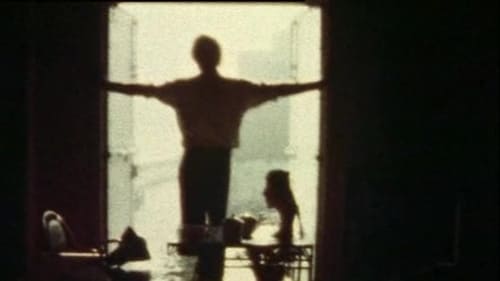
Himself
A collage of Derek Jarman's super 8 footage spanning over 20 years.

Cinematography
A collage of Derek Jarman's super 8 footage spanning over 20 years.

Director
A collage of Derek Jarman's super 8 footage spanning over 20 years.

Himself
Brief portrait of a British wing of an order of gay male nuns.

Himself
Derek Jarman discusses his film and visual art work in this experimental conversation film.

Himself
In this revealing documentary, Ken McMullen creates an elegant portrait of artist and filmmaker Derek Jarman, based on an interview conducted by John Cartwright. The questions are unobtrusive, allowing Jarman to reflect on his major films. Despite the debilitating effects of serious illness, we see an artist with his inner vision unimpaired; still humorous, self effacing and disarmingly charming.
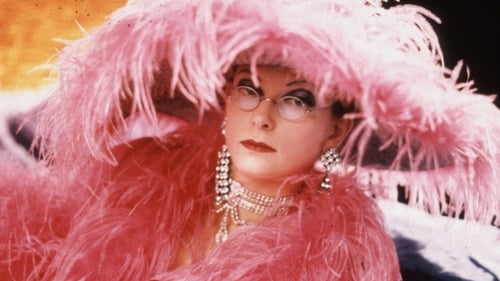
Writer
Una dramatización, en estilo teatral moderno, de la vida y el pensamiento del filósofo educado en Cambridge, Ludwig Wittgenstein, nacido en Viena, cuyo interés principal era la naturaleza y los límites del lenguaje. Una serie de bocetos representan el desarrollo de su vida desde la infancia, a través de la era de la Primera Guerra Mundial, hasta su eventual cátedra de Cambridge y su asociación con Bertrand Russell y John Maynard Keynes. El énfasis en estos bocetos está en la exposición de las ideas de Wittgenstein, un homosexual, y un pensador intuitivo, caprichoso, orgulloso y perfeccionista generalmente considerado como un genio.

Director
Una dramatización, en estilo teatral moderno, de la vida y el pensamiento del filósofo educado en Cambridge, Ludwig Wittgenstein, nacido en Viena, cuyo interés principal era la naturaleza y los límites del lenguaje. Una serie de bocetos representan el desarrollo de su vida desde la infancia, a través de la era de la Primera Guerra Mundial, hasta su eventual cátedra de Cambridge y su asociación con Bertrand Russell y John Maynard Keynes. El énfasis en estos bocetos está en la exposición de las ideas de Wittgenstein, un homosexual, y un pensador intuitivo, caprichoso, orgulloso y perfeccionista generalmente considerado como un genio.

In this short film written and directed by Alexis Bisticas, the audience sees through the eyes of a man in the woods, following the distant sound of a saxophone. In a single take, the fluid steadicam shot takes the viewer on a surreal and poetic journey, as the walker comes across everything from family picnics to men in bondage suits.

Director
Thirteen Smiths' recordings, half of them in a club with a live audience. These alternate with five rock videos, two directed by Derek Jarman (Panic and Ask), two by Tim Broad (Girlfriend in a Coma and Stop Me...), and one by Paula Grief and Richard Levine (How Soon Is Now?). It concludes with Jarman's short film, "The Queen Is Dead," with a three-song soundtrack. The rock videos, particularly Jarman's, are filled with multiple and superimposed images, changing tints, and little narrative coherence; they get their pace from the music's rhythm. Androgyny, dancing children, belching smokestacks, graffiti, angry young men, a waif in a cap: collages of modern alienation.
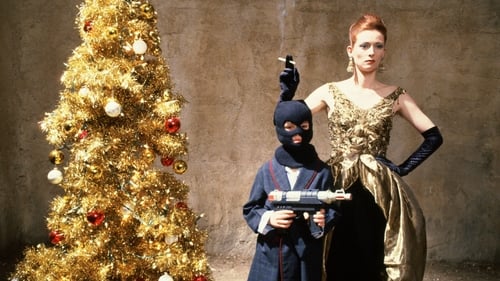
Screenplay
Inglaterra, siglo XIV. El rey Eduardo II se enamora de Piers Gaveston, un joven de origen humilde, a quien honra con favores y títulos de nobleza. La fría y celosa reina Isabella conspira con el malvado Mortimer para deshacerse de Gaveston, derrocar a su marido y tomar el poder…

Director
Inglaterra, siglo XIV. El rey Eduardo II se enamora de Piers Gaveston, un joven de origen humilde, a quien honra con favores y títulos de nobleza. La fría y celosa reina Isabella conspira con el malvado Mortimer para deshacerse de Gaveston, derrocar a su marido y tomar el poder…

Himself
A BBC Arena profile of the Director from the time of the release of his film, The Garden, featuring interviews with Jarman, his collaborators and friends.

Self
A studio discussion which looks at the push for gay marriage, or domestic partnership laws, in Britain, the USA, and Denmark. Would such laws be a truly radical initiative, or a complete sellout to the notion of equality with heterosexuals?

Camera Operator
Interpretación personal de la pasión de Cristo a través de la mirada de Jarman. Dos amantes son humillados, arrestados y torturados en este collage no lineal que expresa las profundas y más personales emociones del director.

Writer
Interpretación personal de la pasión de Cristo a través de la mirada de Jarman. Dos amantes son humillados, arrestados y torturados en este collage no lineal que expresa las profundas y más personales emociones del director.

Himself
Interpretación personal de la pasión de Cristo a través de la mirada de Jarman. Dos amantes son humillados, arrestados y torturados en este collage no lineal que expresa las profundas y más personales emociones del director.

Director
Interpretación personal de la pasión de Cristo a través de la mirada de Jarman. Dos amantes son humillados, arrestados y torturados en este collage no lineal que expresa las profundas y más personales emociones del director.

Director
Concierto de Pet Shop Boys en Wembley en el año 1989

The Voice

Writer
Como en la mayoría de sus películas, Derek Jarman introduce en War Requiem elementos de diferentes artes: la música de War Requiem de Britten, la poesía de guerra de Wilfred Owen y las referencias pictóricas de cuadros de John Martin, William Blake y Piero della Francesca. Además, la película integra elementos de teatro, iconografía religiosa, alusiones del cine mudo y bélico, la poesía de John Keats y fragmentos de documentales y de telediarios.

Director
Como en la mayoría de sus películas, Derek Jarman introduce en War Requiem elementos de diferentes artes: la música de War Requiem de Britten, la poesía de guerra de Wilfred Owen y las referencias pictóricas de cuadros de John Martin, William Blake y Piero della Francesca. Además, la película integra elementos de teatro, iconografía religiosa, alusiones del cine mudo y bélico, la poesía de John Keats y fragmentos de documentales y de telediarios.

Medicine man
Independent film with music by Psychic tv. Features a cameo by Derek Jarman

Himself
Documentary exploring the life and work of artist, Derek Jarman.

Clause and Effect is a tape that combines documentary footage with positive images of gay men and lesbians to show the impact of Clause 28 of the Local Government Bill both on them and the wider community. The tape is framed by an exclusive interview with Derek Jarman who talks about the origins of the Clause, ‘its roots in the moral majority and their interpretations of the Bible’, the effect that it will have on the community and on his work as a film maker.

Pier Paolo Pasolini
Ostia is a fascinating short film directed by Julian Cole and produced for the Royal College of Art, which reconstructs the events leading up to the murder of Pier Paolo Pasolini. Ostia relocates the proceedings to London and stars Derek Jarman as Pasolini. The film features an evocative dream sequence which is accompanied by poignant excerpts from Pasolini’s own poetry, as read by Jarman.
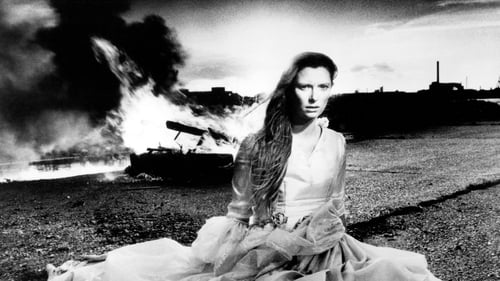
Cinematography
The artist's personal commentary on the decline of his country in a language closer to poetry than prose. A dark meditation on London under Thatcher.

Himself (uncredited)
The artist's personal commentary on the decline of his country in a language closer to poetry than prose. A dark meditation on London under Thatcher.

Writer
The artist's personal commentary on the decline of his country in a language closer to poetry than prose. A dark meditation on London under Thatcher.

Director
The artist's personal commentary on the decline of his country in a language closer to poetry than prose. A dark meditation on London under Thatcher.

Director
Derek Jarman's sequence from the anthology film Aria,which gathered together short musically-themed pieces by a variety of internationally esteemed directors.
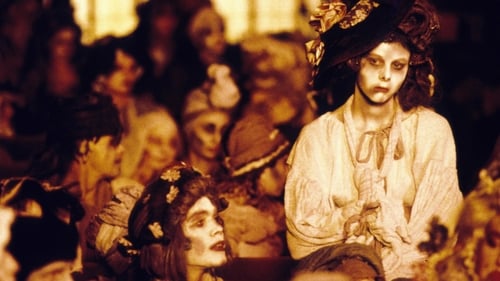
Writer
Película realizada por diez famosos directores y salpicada a menudo con toques humorísticos. Los distintos episodios están dedicados a arias operísticas de grandes compositores: Verdi, Puccini o Wagner, entre otros. Robert Altman, Bruce Beresford, Jean-Luc Godard, Derek Jarman, Franc Roddam, Nicolas Roeg, Ken Russell, Charles Sturridge, Julien Temple y Bill Bryden son los directores que participan en esta película.

Director
Película realizada por diez famosos directores y salpicada a menudo con toques humorísticos. Los distintos episodios están dedicados a arias operísticas de grandes compositores: Verdi, Puccini o Wagner, entre otros. Robert Altman, Bruce Beresford, Jean-Luc Godard, Derek Jarman, Franc Roddam, Nicolas Roeg, Ken Russell, Charles Sturridge, Julien Temple y Bill Bryden son los directores que participan en esta película.
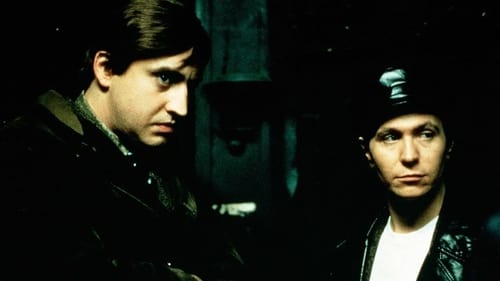
Patrick Proktor
Inglaterra, 1967. Kenneth Hallywell (Alfred Molina), un hombre desequilibrado, mató a martillazos a su amante, el famoso dramaturgo Joe Orton (Gary Oldman), mientras dormía. Después se suicidó tomando una sobredosis de barbitúricos. Ambos tenían en común una infancia solitaria desprovista de amor y una ardiente ambición por conquistar el mundo. Ken enseñó a Joe todo lo que sabía de literatura y de arte, y Joe inició a Ken en la promiscuidad sexual (principalmente en los urinarios públicos). Pero, en aquella época, la homosexualidad era ilegal en Inglaterra, y los dos fueron a parar a la cárcel. La prisión supuso una liberación para Joe, que por primera vez terminó una obra que le proporcionó fama y éxito; pero para Ken fue el principio de una pesadilla que terminó la noche fatal en que murieron. Lo habían compartido todo menos la fama.

Director
Three song clips by The Smiths ('The Queen is Dead', 'There is a Light that Never Goes Out' and 'Panic'), all directed with an artistic and conceptual vision by the late Derek Jarman. The result is the junction of the powerful lyrics and melodies by Morrissey and Marr combined with Jarman's expressive images.

Papal Aide (uncredited)
El pintor Michelangelo Merisi, nacido en Caravaggio, se está muriendo lejos de su hogar. En el lecho de muerte recuerda los comienzos de su vida como pintor. El niño Michelangelo dejó su Caravaggio natal al quedar huérfano, y se traslada a Milán, donde se inicia como pintor en diferentes talleres, hasta que establece un taller propio, en la Roma de los Papas, ganándose el favor de la Iglesia, que le encarga numerosas obras. Llegan entonces la fama, el dinero, sus amores homosexuales, las intrigas políticas y religiosas, la envidia y el crimen.

Screenplay
El pintor Michelangelo Merisi, nacido en Caravaggio, se está muriendo lejos de su hogar. En el lecho de muerte recuerda los comienzos de su vida como pintor. El niño Michelangelo dejó su Caravaggio natal al quedar huérfano, y se traslada a Milán, donde se inicia como pintor en diferentes talleres, hasta que establece un taller propio, en la Roma de los Papas, ganándose el favor de la Iglesia, que le encarga numerosas obras. Llegan entonces la fama, el dinero, sus amores homosexuales, las intrigas políticas y religiosas, la envidia y el crimen.

Director
El pintor Michelangelo Merisi, nacido en Caravaggio, se está muriendo lejos de su hogar. En el lecho de muerte recuerda los comienzos de su vida como pintor. El niño Michelangelo dejó su Caravaggio natal al quedar huérfano, y se traslada a Milán, donde se inicia como pintor en diferentes talleres, hasta que establece un taller propio, en la Roma de los Papas, ganándose el favor de la Iglesia, que le encarga numerosas obras. Llegan entonces la fama, el dinero, sus amores homosexuales, las intrigas políticas y religiosas, la envidia y el crimen.

Himself
Andy, a laddish Essex boy with a knack for creating gorgeous furniture from found wood, has had a life packed with excitement. He tells a string of riveting anecdotes with his trademark cocky swagger in this fondly remembered documentary. From his work as a rent boy to a spell stealing cars to his discovery by filmmaker Derek Jarman, Andy makes for a hilariously blunt and bawdy raconteur.

Director
A 16mm anthology of experimental super 8 films by Derek Jarman, Michael Kostiff, Cerith Wyn Evans and John Maybury, with framing footage by Tim Burke of Brion Gysin using a dream machine. Jarman's contribution is a version of his 1977 Art and the Pose (aka Arty the Pose), refilmed at 3fps, with a musical soundtrack. Jarman planned The Dream Machine as a commemoration of William Burroughs and Gysin's 1982 visit to the UK, and received initial funding from the Arts Council in 1983, then rethought the project as a portmanteau film featuring Gysin alone. The production remained in limbo until 1986, when James Mackay obtained completion funding from the British Film Institute. (Since this film was released on VHS accompanied by Jarman's Broken English: Three Songs by Marianne Faithfull, T.G.: Psychic Rally in Heaven and Pirate Tape under the umbrella title The Dream Machine, synopses of this film have often muddled up its details with those of the earlier films. )

Director of Photography
Una evocativa y radical visualización de los poemas de amor de William Shakespeare leídos por Judi Dench. Catorce sonetos emparejados con etéreas secuencias, figuras de mar, jardines coloridos y mágicas escenas con imágenes de paisajes que expresan perfectamente el amor explorado en los sonetos.

Director
Una evocativa y radical visualización de los poemas de amor de William Shakespeare leídos por Judi Dench. Catorce sonetos emparejados con etéreas secuencias, figuras de mar, jardines coloridos y mágicas escenas con imágenes de paisajes que expresan perfectamente el amor explorado en los sonetos.

Director
Imagining October explores art and politics in the final years of the Cold War, drawing connections between pre-Perestroika Russia and Thatcherite Britain. The title refers to the 1917 Bolshevik revolution and Sergei Eisenstein’s propaganda film October: Ten Days That Shook the World 1928. The project began during a trip to the Soviet Union sponsored by the British Film Institute in October 1984. Jarman was invited to present The Tempest in Moscow and Baku with fellow filmmaker Sally Potter and film theorist Peter Wollen and asked in return to make a short film for the London Film Festival in November.

Editor
Imagining October explores art and politics in the final years of the Cold War, drawing connections between pre-Perestroika Russia and Thatcherite Britain. The title refers to the 1917 Bolshevik revolution and Sergei Eisenstein’s propaganda film October: Ten Days That Shook the World 1928. The project began during a trip to the Soviet Union sponsored by the British Film Institute in October 1984. Jarman was invited to present The Tempest in Moscow and Baku with fellow filmmaker Sally Potter and film theorist Peter Wollen and asked in return to make a short film for the London Film Festival in November.

Cinematography
Imagining October explores art and politics in the final years of the Cold War, drawing connections between pre-Perestroika Russia and Thatcherite Britain. The title refers to the 1917 Bolshevik revolution and Sergei Eisenstein’s propaganda film October: Ten Days That Shook the World 1928. The project began during a trip to the Soviet Union sponsored by the British Film Institute in October 1984. Jarman was invited to present The Tempest in Moscow and Baku with fellow filmmaker Sally Potter and film theorist Peter Wollen and asked in return to make a short film for the London Film Festival in November.

Writer
Imagining October explores art and politics in the final years of the Cold War, drawing connections between pre-Perestroika Russia and Thatcherite Britain. The title refers to the 1917 Bolshevik revolution and Sergei Eisenstein’s propaganda film October: Ten Days That Shook the World 1928. The project began during a trip to the Soviet Union sponsored by the British Film Institute in October 1984. Jarman was invited to present The Tempest in Moscow and Baku with fellow filmmaker Sally Potter and film theorist Peter Wollen and asked in return to make a short film for the London Film Festival in November.

In the early 1980s, Jarman struggled to get feature film projects off the ground and invested his energies in different fields, including music videos. In 1984 he made the promo for ‘What Presence?!’ by Scottish post-punk band Orange Juice, as fronted by Edwyn Collins. Before the official shoot, however, he visited the location and made this tape, trying out shots with a newly acquired Olympus VHS camera. The warm colours and fuzzy softness of the format, plus the decision to shoot handheld, imbue this little-known, rarely seen artefact with a palpable directness.

Director
In the early 1980s, Jarman struggled to get feature film projects off the ground and invested his energies in different fields, including music videos. In 1984 he made the promo for ‘What Presence?!’ by Scottish post-punk band Orange Juice, as fronted by Edwyn Collins. Before the official shoot, however, he visited the location and made this tape, trying out shots with a newly acquired Olympus VHS camera. The warm colours and fuzzy softness of the format, plus the decision to shoot handheld, imbue this little-known, rarely seen artefact with a palpable directness.

Director
Derek Jarman’s Will You Dance with Me? is an essential document of LGBTQ London that was unseen until 2014, 30 years after it was originally shot. In September 1984, Jarman was invited by director Ron Peck and writer Mark Ayres to record improvisations at Benjy’s, a gay club in East London’s Mile End district, as part of the early experimental work for their feature film Empire State, a neo-noir that would be released in 1987. The coed, racially diverse crowd of roughly 100 people at Benjiy’s that night included club regulars, bar staff, and potential players in Empire State. Every single detail captured in Jarman’s on-location assignment abounds with era-specific riches: from the New Romantic cutie journaling while nestled in a corner booth to the DJ’s cheerful exhortations and the songs he spins (“Let the Music Play,” “Planet Rock,” “Relax").

Director
A short film created for Spanish TV touching on the subject of Catalonia's struggle for independence, interspersed with symbolic images.
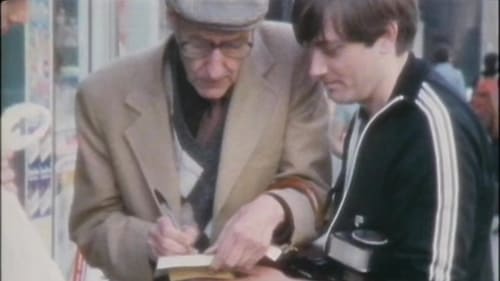
Cinematography
Derek Jarman's film portrait of American writer William S. Burroughs was shot in September 1982 during his first visit to England to attend the legendary Final Academy events at the South London Ritzy Cinema. These were Burroughs-themed art and performance nights curated by Psychic TV. Jarman’s film shows Burroughs on Tottenham Court Road signing autographs with fans and inside a shop buying alcohol. The industrial soundtrack by Psychic TV features a sample of Burroughs repeating "boys, school showers and swimming pools full of 'em'". Additional footage shot by Jarman during Burroughs' visit is reported to have been confiscated by Scotland Yard in 1991 and remains lost. Jarman and Psychic TV would continue to collaborate (“magic bound us together” Jarman wrote), with Jarman directing the music video for Catalan and staring as the spokesperson in the Psychic TV video A Spokesman for the Temple of Psychick Youth.

Director
Derek Jarman's film portrait of American writer William S. Burroughs was shot in September 1982 during his first visit to England to attend the legendary Final Academy events at the South London Ritzy Cinema. These were Burroughs-themed art and performance nights curated by Psychic TV. Jarman’s film shows Burroughs on Tottenham Court Road signing autographs with fans and inside a shop buying alcohol. The industrial soundtrack by Psychic TV features a sample of Burroughs repeating "boys, school showers and swimming pools full of 'em'". Additional footage shot by Jarman during Burroughs' visit is reported to have been confiscated by Scotland Yard in 1991 and remains lost. Jarman and Psychic TV would continue to collaborate (“magic bound us together” Jarman wrote), with Jarman directing the music video for Catalan and staring as the spokesperson in the Psychic TV video A Spokesman for the Temple of Psychick Youth.

Spokesman
A shadowy, sharply-dressed spokesman for the occult, chaos-magic fellowship and network The Temple of Psychic Youth reads a brief message.

Director

Director
Super 8 film by Derek Jarman.

Director
An experimental film of the group Throbbing Gristle in concert.

N°105
Reel 11 of Gérard Courant's on-going Cinematon series.

Director
Imágenes de actos rituales y de objetos de significación mística se superponen con el fin de reproducir un universo abstracto de simbolismo onírico a través del color, la textura y el misterio.
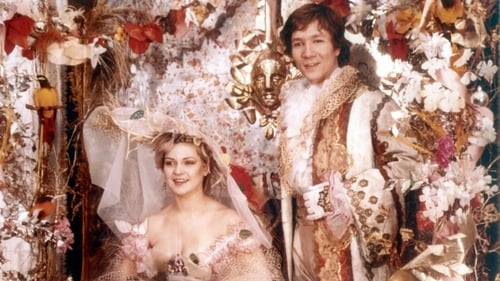
Writer
Prospero, a potent magician, lives on a desolate isle with his virginal daughter, Miranda. He's in exile, banished from his duchy by his usurping brother and the King of Naples. Providence brings these enemies near; aided by his vassal the spirit Ariel, Prospero conjures a tempest to wreck the Italian ship. The king's son, thinking all others lost, becomes Prospero's prisoner, falling in love with Miranda and she with him. Prospero's brother and the king wander the island, as do a drunken cook and sailor, who conspire with Caliban, Prospero's beastly slave, to murder Prospero. Prospero wants reason to triumph, Ariel wants his freedom, Miranda a husband; the sailors want to dance.

Director
Prospero, a potent magician, lives on a desolate isle with his virginal daughter, Miranda. He's in exile, banished from his duchy by his usurping brother and the King of Naples. Providence brings these enemies near; aided by his vassal the spirit Ariel, Prospero conjures a tempest to wreck the Italian ship. The king's son, thinking all others lost, becomes Prospero's prisoner, falling in love with Miranda and she with him. Prospero's brother and the king wander the island, as do a drunken cook and sailor, who conspire with Caliban, Prospero's beastly slave, to murder Prospero. Prospero wants reason to triumph, Ariel wants his freedom, Miranda a husband; the sailors want to dance.

Director
12 minute short film for 'Broken English' directed by Derek Jarman, comprised of “Witches Song”, “The Ballad of Lucy Jordan” and “Broken English”. Part of the “The Dream Machine” vignette (1983).
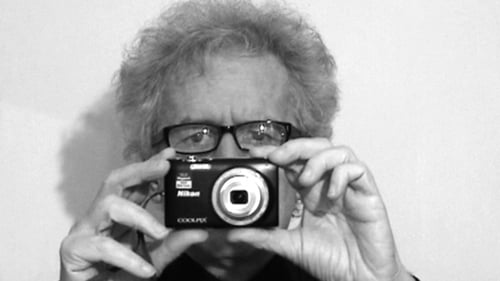
N°105
Cinématon is a 156-hour long experimental film by French director Gérard Courant. It was the longest film ever released until 2011. Composed over 36 years from 1978 until 2006, it consists of a series of over 2,821 silent vignettes (cinématons), each 3 minutes and 25 seconds long, of various celebrities, artists, journalists and friends of the director, each doing whatever they want for the allotted time. Subjects of the film include directors Barbet Schroeder, Nagisa Oshima, Volker Schlöndorff, Ken Loach, Benjamin Cuq, Youssef Chahine, Wim Wenders, Joseph Losey, Jean-Luc Godard, Samuel Fuller and Terry Gilliam, chess grandmaster Joël Lautier, and actors Roberto Benigni, Stéphane Audran, Julie Delpy and Lesley Chatterley. Gilliam is featured eating a 100-franc note, while Fuller smokes a cigar. Courant's favourite subject was a 7-month-old baby. The film was screened in its then-entirety in Avignon in November 2009 and was screened in Redondo Beach, CA on April 9, 2010.

Writer
Coincidiendo con el jubileo de la Reina Isabel II, Derek Jarman rueda esta película en la que la Reina Isabel I invoca con ayuda del ocultista John Dee a un espíritu guía llamado Ariel, que les transportará en el tiempo a la Inglaterra de los 70. En esta Inglaterra figurada tomada por el caos, la Reina Isabel II ha sido asesinada, y las pandillas, como la de Amyl Nitrate, Bod, Chaos, Crabs, y Mad, hacen de las suyas por doquier. Jubilee es quizás la película más emblemática del punk, apareciendo en ella iconos de este movimiento como Adam Ant, las Slits o Wayne County.

Director
Coincidiendo con el jubileo de la Reina Isabel II, Derek Jarman rueda esta película en la que la Reina Isabel I invoca con ayuda del ocultista John Dee a un espíritu guía llamado Ariel, que les transportará en el tiempo a la Inglaterra de los 70. En esta Inglaterra figurada tomada por el caos, la Reina Isabel II ha sido asesinada, y las pandillas, como la de Amyl Nitrate, Bod, Chaos, Crabs, y Mad, hacen de las suyas por doquier. Jubilee es quizás la película más emblemática del punk, apareciendo en ella iconos de este movimiento como Adam Ant, las Slits o Wayne County.

A gay teacher is forced to hide his sexuality by day while living his secret life by night, in Great Britain in the 1970s, not mixing his professional and private life, until the day comes when his students and his headmaster find out.

Editor
This film was shot on Super-8 by Derek Jarman in 1977 and is considered to be the inspiration for Jubilee. Jarman often showed his films silent or with different musical accompaniment - one of Jarman's suggestions was Brahms' "Violin Concerto."

Cinematography
This film was shot on Super-8 by Derek Jarman in 1977 and is considered to be the inspiration for Jubilee. Jarman often showed his films silent or with different musical accompaniment - one of Jarman's suggestions was Brahms' "Violin Concerto."

Director
This film was shot on Super-8 by Derek Jarman in 1977 and is considered to be the inspiration for Jubilee. Jarman often showed his films silent or with different musical accompaniment - one of Jarman's suggestions was Brahms' "Violin Concerto."

Director
An experimental short film by Derek Jarman cuts together disparate footage.
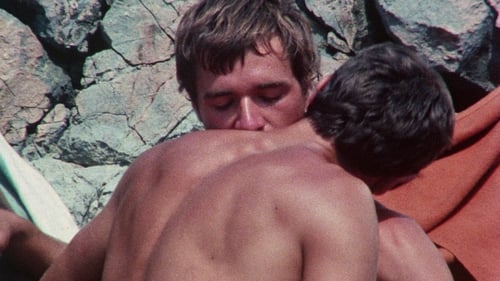
Production Design
Durante el reinado del emperador romano Diocleciano los cristianos gozaban de una cierta tranquilidad, hasta que unos disturbios hacen que la actitud del emperardor con respecto a ellos cambie.

Writer
Durante el reinado del emperador romano Diocleciano los cristianos gozaban de una cierta tranquilidad, hasta que unos disturbios hacen que la actitud del emperardor con respecto a ellos cambie.

Director
Durante el reinado del emperador romano Diocleciano los cristianos gozaban de una cierta tranquilidad, hasta que unos disturbios hacen que la actitud del emperardor con respecto a ellos cambie.

Director
A stop-motion film showing Jarman and several other occupants vandalizing an apartment from which they have just been evicted.

Director
An experimental short by Derek Jarman visually represents a crumbling barn.

Himself
Super 8 footage shot on location in Sardinia in 1975.

Director
Super 8 footage shot on location in Sardinia in 1975.

Director
An experimental film by Derek Jarman in which male subjects are bathed in light.

Cinematography
A filmed record of a bizarre garden party organized to pay a fine incurred by singer Ulla for "liberating a chandelier from Harrods."

Director
A filmed record of a bizarre garden party organized to pay a fine incurred by singer Ulla for "liberating a chandelier from Harrods."

Director
Super 8 short film by Derek Jarman, shot on Fire Island in New York.

Director
An experimental short film by Derek Jarman includes images of a man combing his hair, death reflected in the mirror and various burning objects.

Director
A short film by Derek Jarman.

Editor
An experimental short film by Derek Jarman the depicts the crush of flesh at an art-world event.

Editor
Experimental short overlays footage of buildings and fields with that of a spiral galaxy.

Cinematography
Experimental short overlays footage of buildings and fields with that of a spiral galaxy.

Director
Super 8 film by Derek Jarman

Director
An experimental short film by Derek Jarman the depicts the crush of flesh at an art-world event.

Director
Stolen Apples for Karen Blixen is a three-minute black and white film which begins with a portrait of Karen Blixen taken from a photograph.

Director
In this experimental short, four naked men are touched by death.

Director
Experimental short overlays footage of buildings and fields with that of a spiral galaxy.
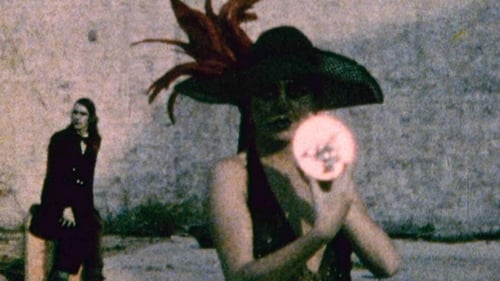
Director
The Art of Mirrors is an abstract film made in 1973 by director, Derek Jarman. The film, shot in super 8 features figures moving in the foreground and background of an empty space holding mirrors which occasionally flash in the lens of the camera. The images portrayed in the film are reminiscent of Jarman's Abstract Landscape paintings of the same period. In his diary Jarman wrote of this film, 'this is only something that could only be done on a Super 8 camera, with it's built in meters and effects.' The film's title was reworked in the script for 'Dr Dee The Art Of Mirrors and The Summoning Of Angels' in 1975.
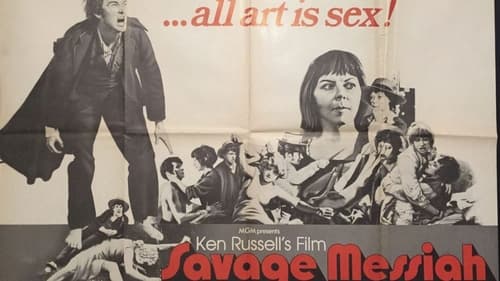
Set Designer
"El mesías salvaje" narra la historia de la relación platónica entre el joven escultor francés Henri Gaudier-Brzeska (Scott Antony) y una mujer mayor, Sophie Brzeska (Dorothy Tutin), en la Europa previa a la Primera Guerra Mundial. Las maneras desenfrenadas del joven son contrarrestadas por el carácter equilibrado de la mujer.

Cinematography
A silent avant-garde experience created by Derek Jarman, filled with superimposed images forming a whole picture. His palette consists mostly of reddish random images of Egypt and the pyramids; a strange garden destroyed from time to time by a man with a whip; a young peaceful man relaxing on the floor; other smoking and eating insects. This is Jarman's view of the Garden of Luxor and its mysteries. (IMDb)

Director
An experimental short film by Derek Jarman enlivens urban surrounding with the presence of a human being.

Director
A short experimental film by Derek Jarman.

Director
'Miss Gaby' gets ready for her close up, Sunset Boulevard-style. Primping and preening herself in the make-up mirror, she applies her mask while an admirer pays court from an unmade bed.

Director
A silent avant-garde experience created by Derek Jarman, filled with superimposed images forming a whole picture. His palette consists mostly of reddish random images of Egypt and the pyramids; a strange garden destroyed from time to time by a man with a whip; a young peaceful man relaxing on the floor; other smoking and eating insects. This is Jarman's view of the Garden of Luxor and its mysteries. (IMDb)
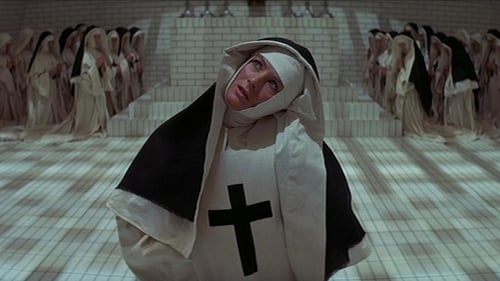
Production Design
Controvertido y célebre flim sobre un clérigo, en la Francia del XVII, acusado de herejía. Basada libremente en hechos reales ocurridos en el convento de Laudun, en Francia, en el que supuestamente unas monjas Ursulinas fueron poseídas por el diablo en 1634.

Editor
A silent short movie, is a literal journey that we can experience. We are being taken to Avebury and given the chance to admire it for 10 minutes. The shots are incredibly beautiful, as we see a huge stone or trees bathed in orange light of sunset.

Cinematography
A silent short movie, is a literal journey that we can experience. We are being taken to Avebury and given the chance to admire it for 10 minutes. The shots are incredibly beautiful, as we see a huge stone or trees bathed in orange light of sunset.

Director
Short film made on Bankside featuring, as the electric fairy, a "young man with curly blonde hair, a star on his forehead and stars on his tunic, headphones, jewels and carmine lips".

Director
An experimental film by Derek Jarman that captures the decay of an urban environment.

Director
A silent short movie, is a literal journey that we can experience. We are being taken to Avebury and given the chance to admire it for 10 minutes. The shots are incredibly beautiful, as we see a huge stone or trees bathed in orange light of sunset.

Set Designer
A documentary record of the 1968 ballet by Frederick Ashton, performed by The Royal Ballet at the Royal Opera House.

Costume Design
A documentary record of the 1968 ballet by Frederick Ashton, performed by The Royal Ballet at the Royal Opera House.



























